
AI-assisted cameras are one of this year's hottest buzzwords. The plan is to help us take better-looking pictures, insinuating machines are better photographers than you and I.
You'll find the technology packed into high profile releases like the Huawei P20 Pro, LG G7 ThinQ, and Google Pixel 2, and more. It comes in some different forms though. Huawei and LG use scene detection algorithms to adjust their color profiles and post-processing accordingly. Google leans heavily on machine learning-based HDR+ post-processing to enhance all of its pictures through its Visual Core hardware.
For this article, we'll compare AI-assisted and regular shots from the Pixel 2, along with the Huawei P20 Pro and LG V30S, to see if these modes actually produce better results than their regular cameras. All three phones provide the option to turn AI/HDR+ support off and on in their default cameras, so let's see what changes the "AI" algorithm makes versus standard shots.
Outdoors
Landscape
Right out of the gate, the Huawei P20 Pro shows off just what a difference its "AI" capabilities can make. The camera took a reasonably well balanced HDR-esque shot, though it was slightly underexposed the foreground, and transformed it into a much better exposed, extremely vivid scene. The English countryside certainly isn't that green after this dry hot summer, but if you're going an angelic look the P20 Pro produces a shot no other camera offers.
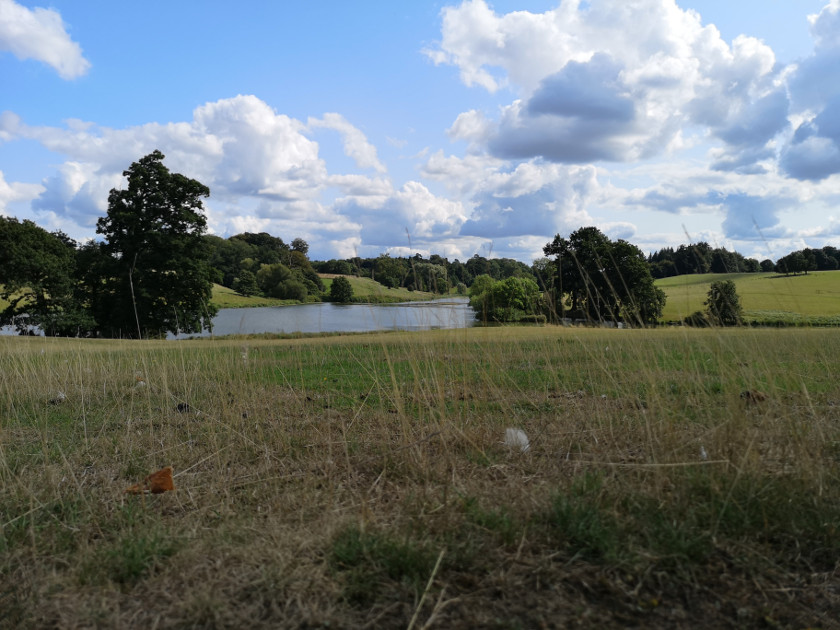 Huawei P20 Pro Landscape AI ON Huawei P20 Pro Landscape AI OFF
Huawei P20 Pro Landscape AI ON Huawei P20 Pro Landscape AI OFF 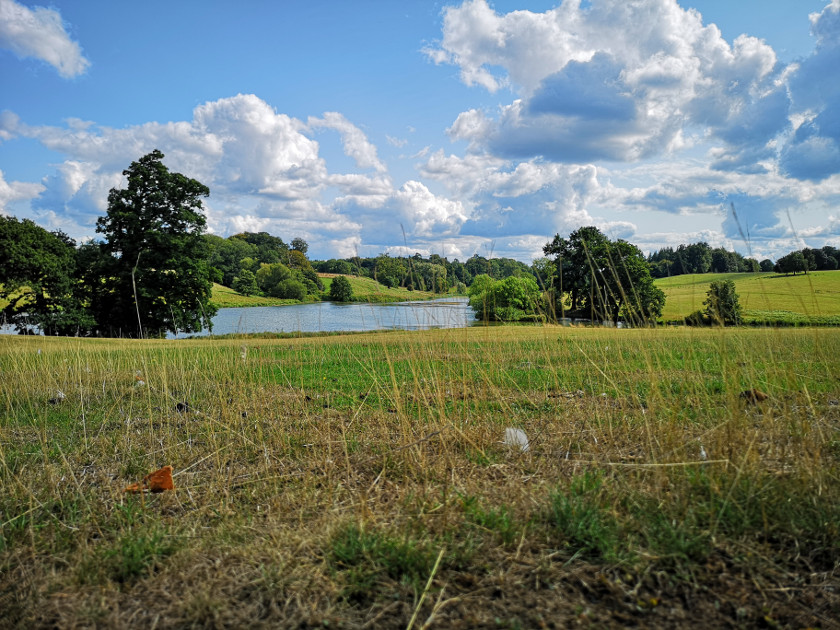
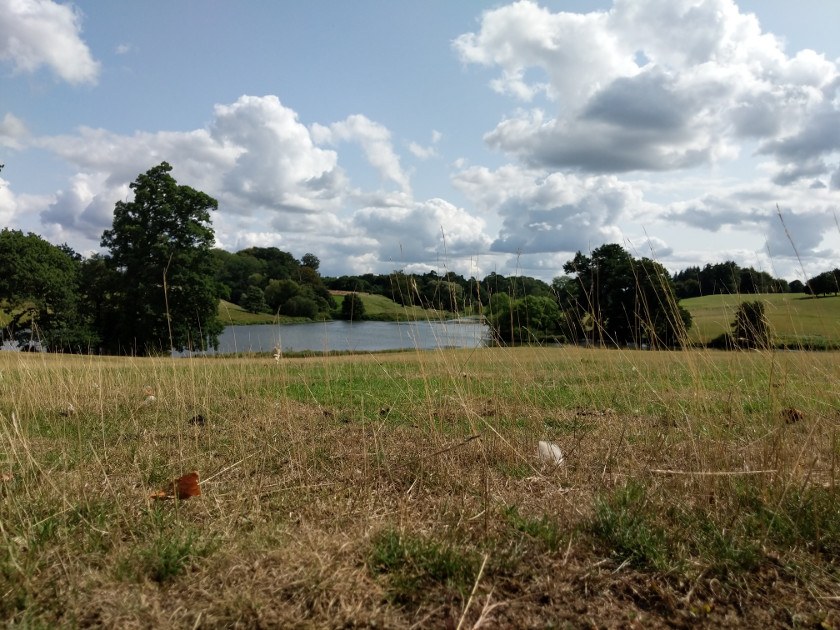 Google Pixel 2 Landscape HDR ON Google Pixel 2 Landscape HDR OFF
Google Pixel 2 Landscape HDR ON Google Pixel 2 Landscape HDR OFF 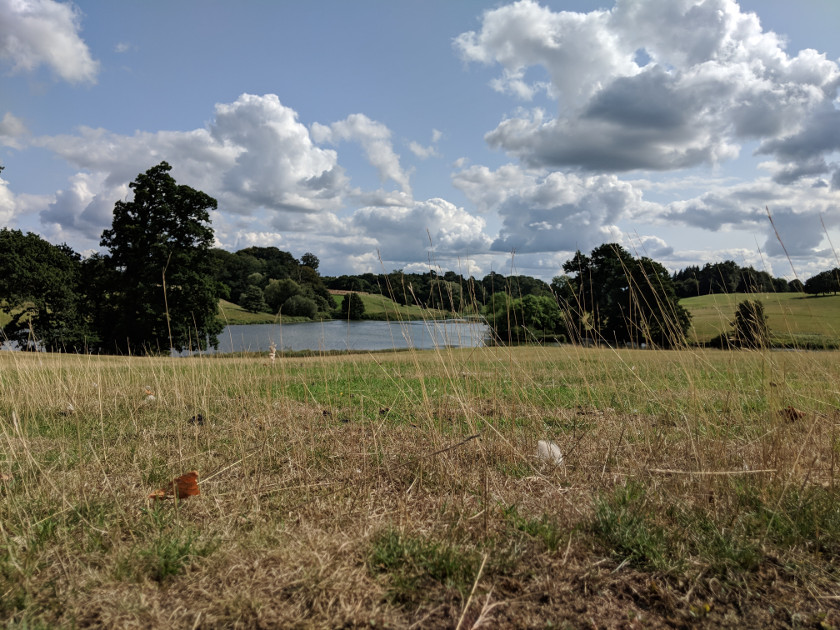
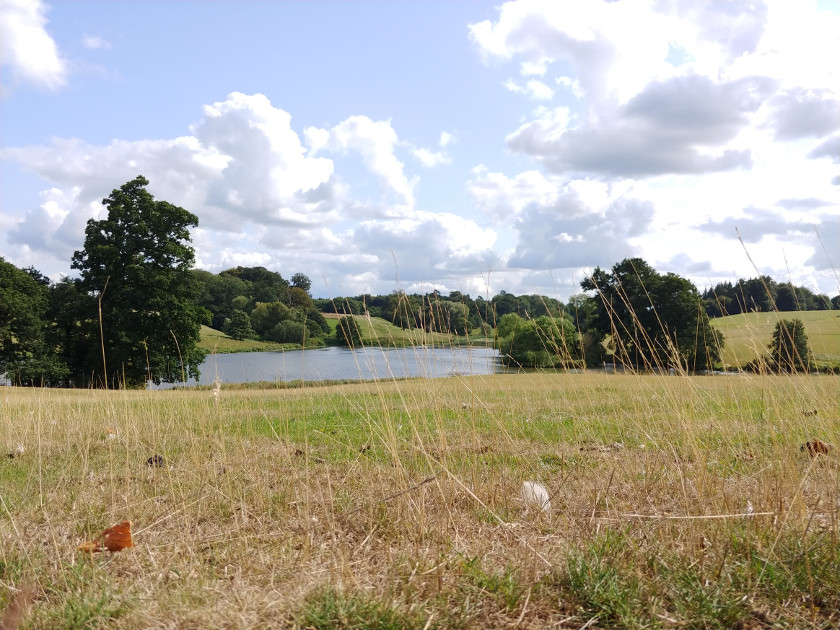 LG V30S Landscape AI ON LG V30S Landscape AI OFF
LG V30S Landscape AI ON LG V30S Landscape AI OFF 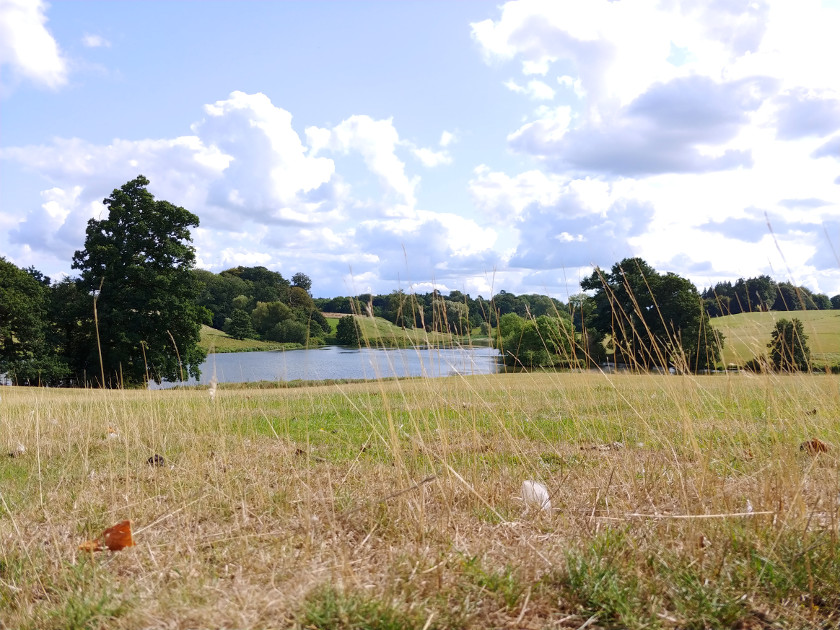
The Google Pixel 2 offers a perfectly fine shot even without HDR activated. Switching it on fixes up some of the small exposure issues with the clouds, at the small expense of color saturation in the grass and sky, and over-darkening of the trees. Arguably the HDR image doesn't quite do the warm summer's day justice, tinting the image slightly on the cold side.
The LG V30S, on the other hand, overexposes the image to brighten up the foreground. The colors fit the scene well, but the AI camera option only applies a slight tweak to the color grading, rather than overhauling the image like the P20 Pro. It's a barely noticeable difference.
Building
The Google Pixel 2's HDR feature puts in another solid performance in this shot, and the colors hold up better this time around. All three cameras handle this shot particularly well, but Google's AI function works best here. HDR again fixes up the cloud exposure and also lends a more natural and detailed look to the stone on the distant building.
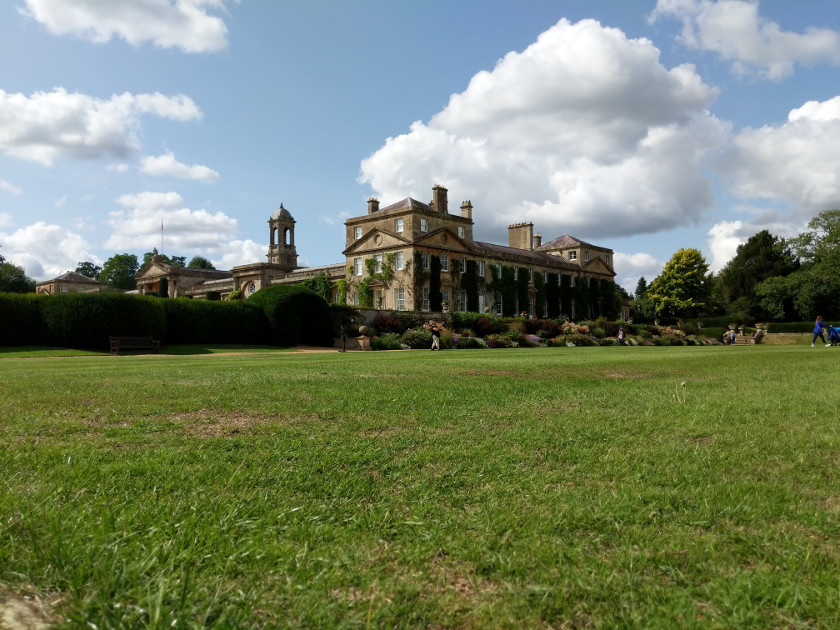 Google Pixel 2 Building HDR ON Google Pixel 2 Building HDR OFF
Google Pixel 2 Building HDR ON Google Pixel 2 Building HDR OFF 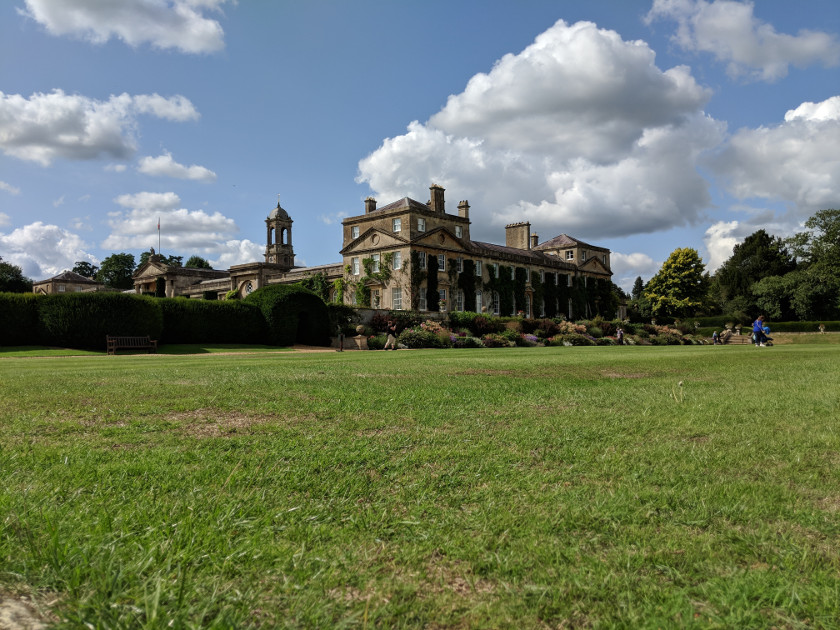
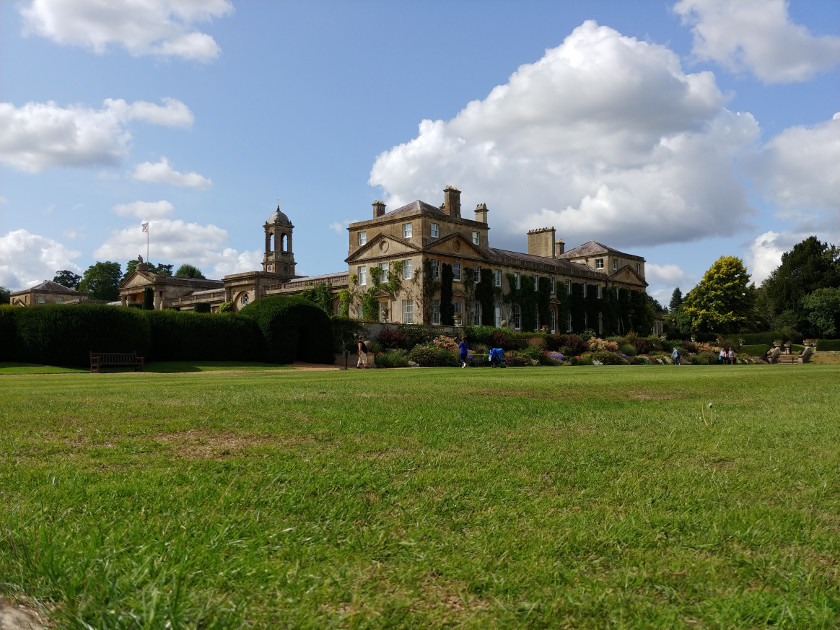 LG V30S Building AI ON LG V30S Building AI OFF
LG V30S Building AI ON LG V30S Building AI OFF 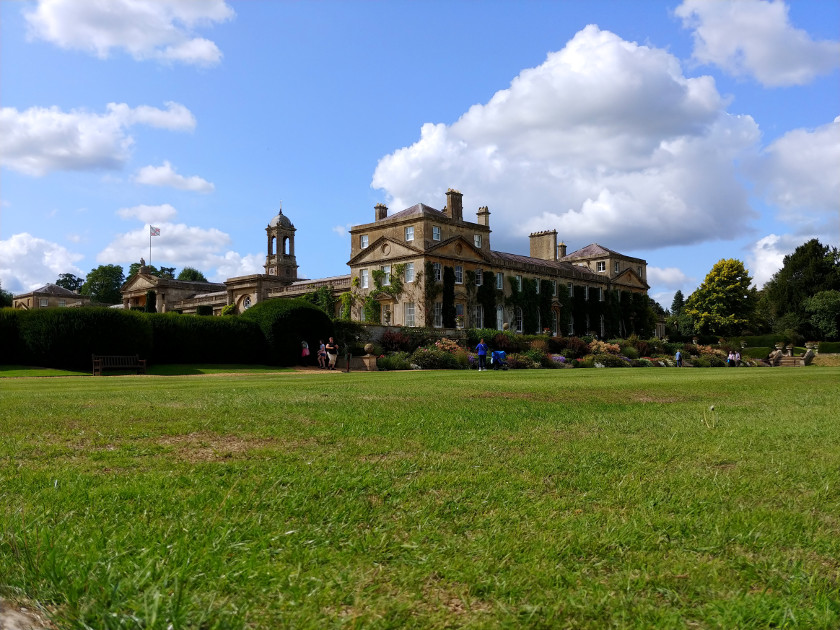
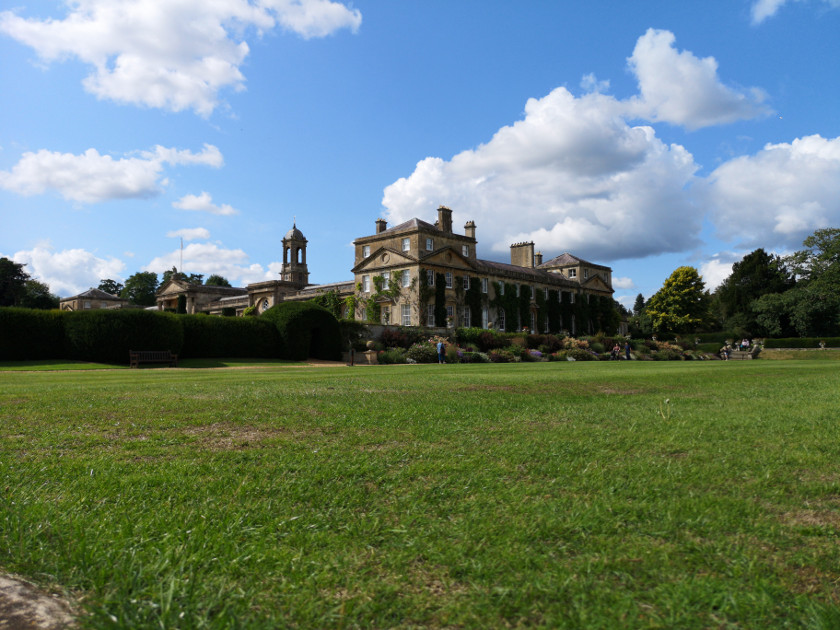 Huawei P20 Pro Building AI ON Huawei P20 Pro Building AI OFF
Huawei P20 Pro Building AI ON Huawei P20 Pro Building AI OFF 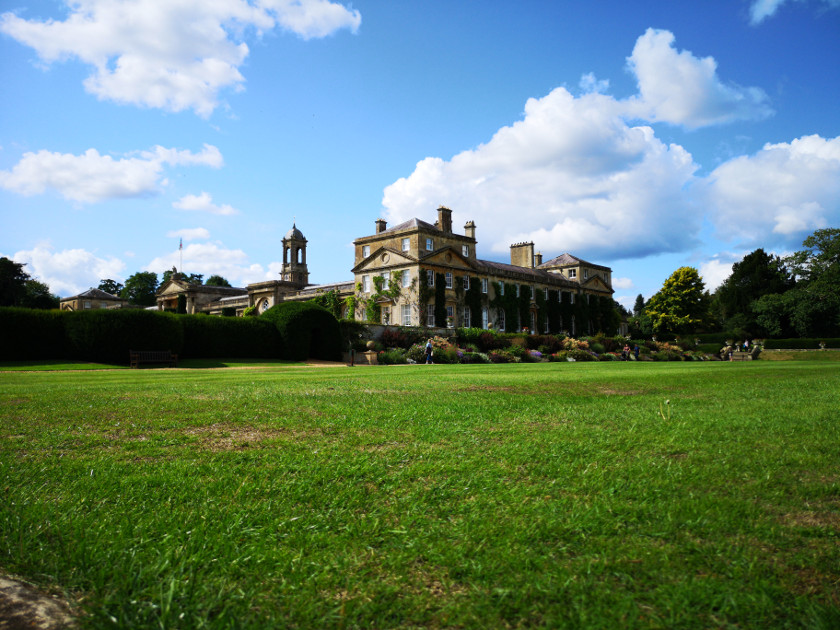
It's a close runoff with the LG V30S' images, which both offer fine exposure and good colors. Switching on the AI camera boosts the saturation rather noticeably. It's not too far to completely blow out the picture, but many viewers, including myself, will probably dislike the unnaturally high contrast.
The Huawei P20 Pro's AI option takes an even more drastic approach to color saturation. The original picture is already as well exposed as Google's HDR+ algorithm and captures the blue of the sky perhaps best out of all three cameras. However, the AI mode dials everything up to 11, again producing the most dramatic look. This time around, it's excessive. The notable vignette to the picture feels completely unnecessary given the abundant tweaks already made. It's striking, yes, but certainly not an upgrade over the standard picture.
Close up
Food
Social media loves a good food picture and it's no surprise our AI cameras are pretty snappy at detecting various foods.
The V30S gives us the most notable boost to color saturation this time, which really makes the fruit in this scene pop out. It's much more eye-catching than Huawei's camera software, which simply ups the exposure and brightness a tad. The P20 Pro's pictures are both nice and bright, but the AI picture is washed out compared to the other two examples. LG's punchy color profile is also a better look for social media than the Pixel 2's HDR shot.
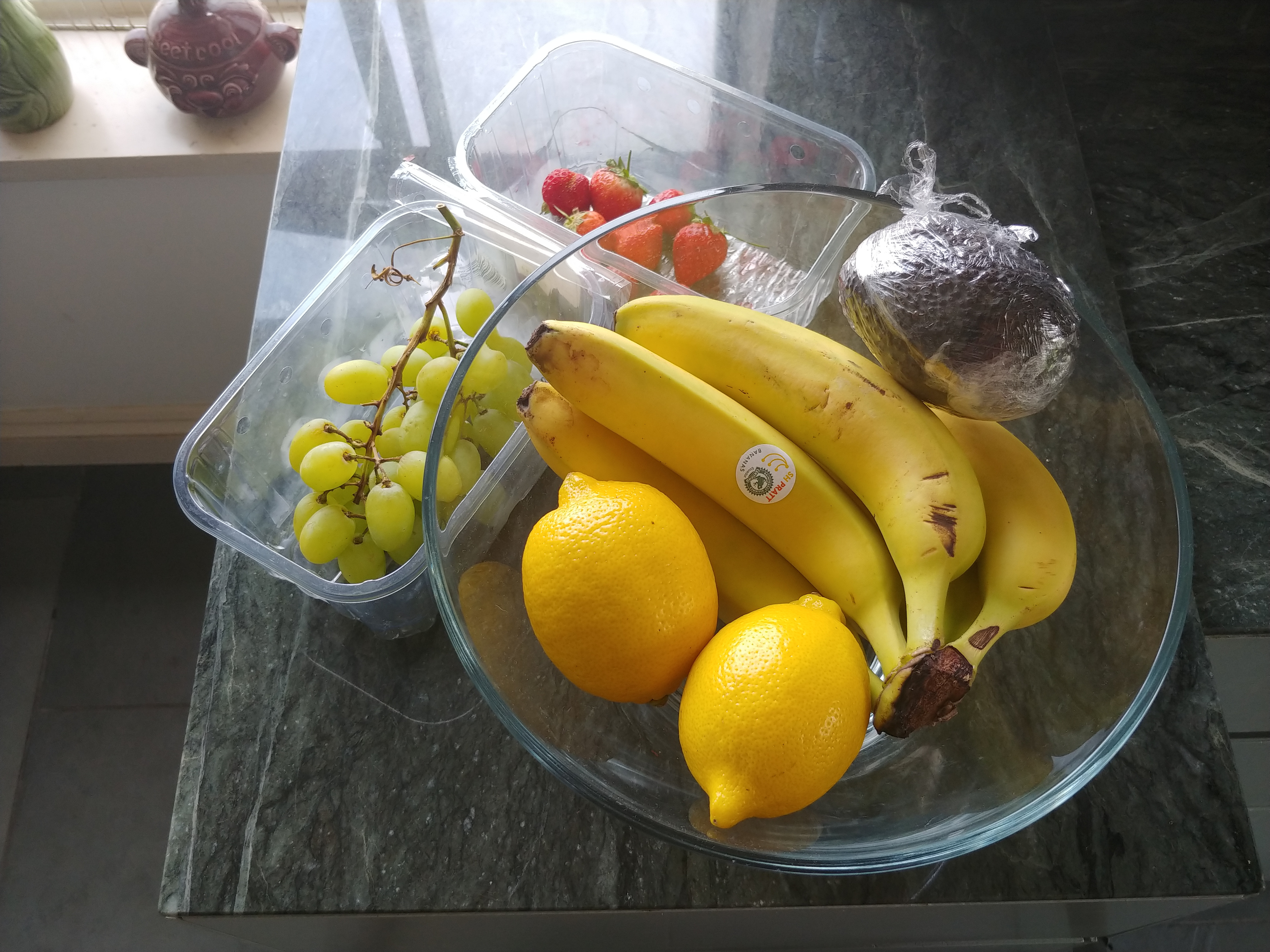 LG V30S Food AI ON LG V30S Food AI OFF
LG V30S Food AI ON LG V30S Food AI OFF 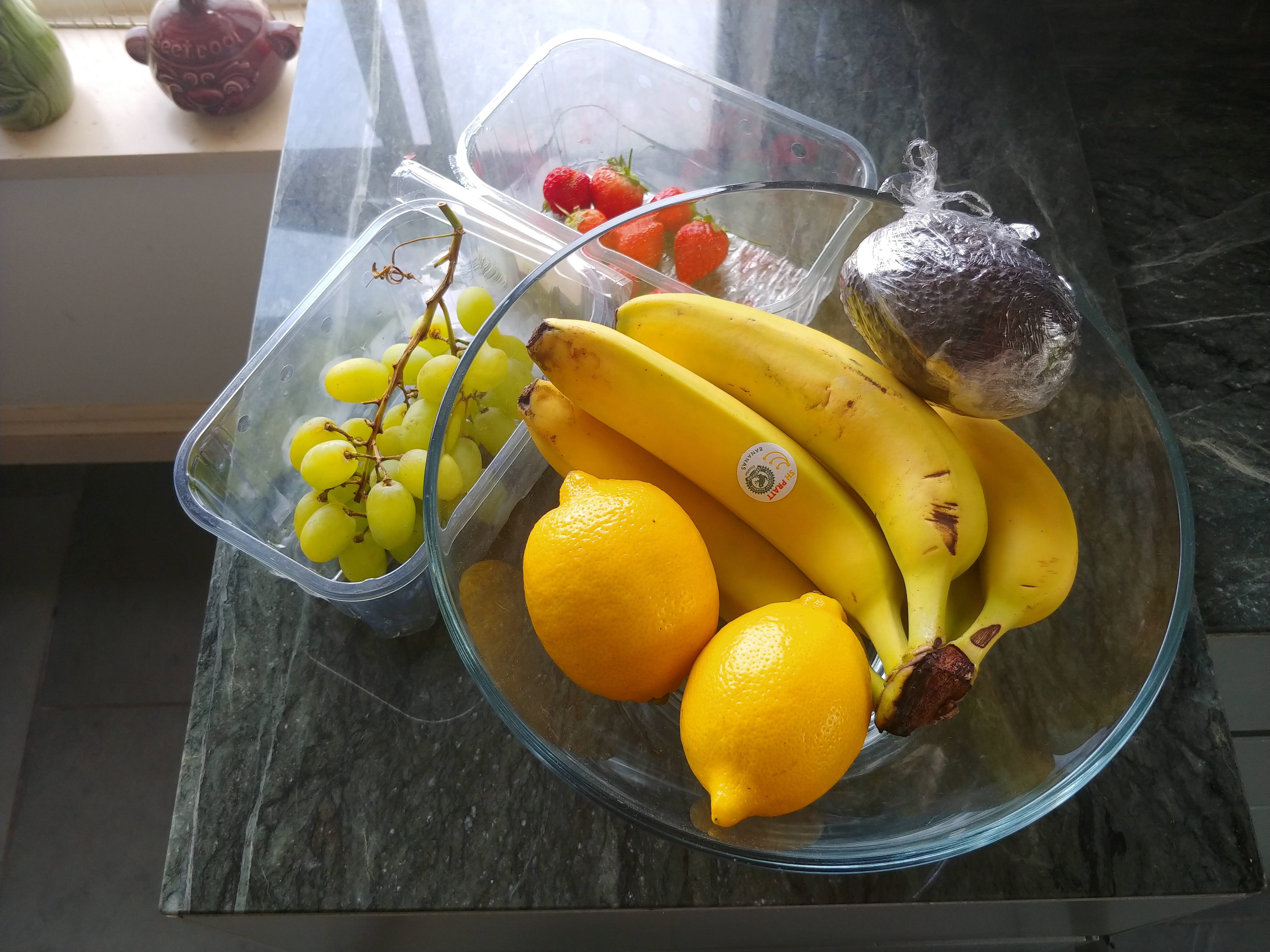
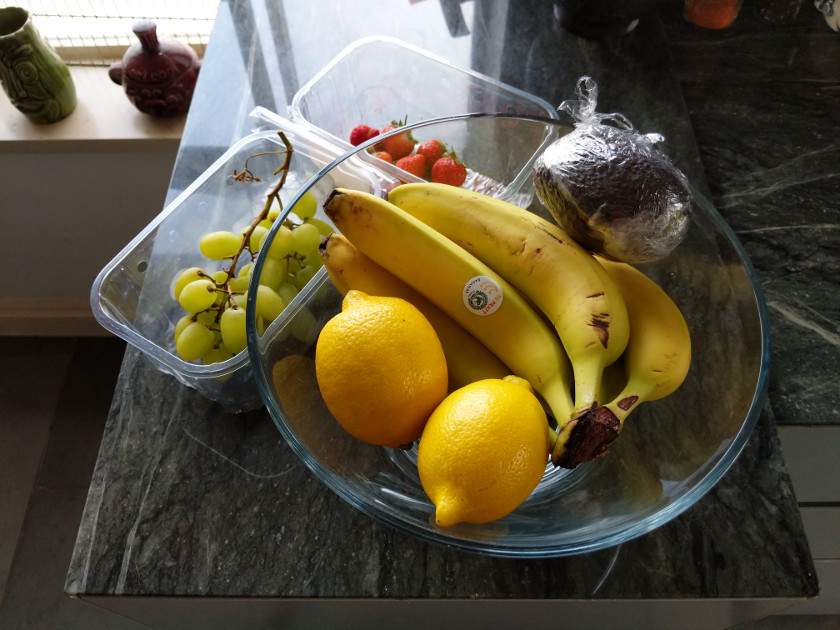 Google Pixel 2 Food HDR ON Google Pixel 2 Food HDR OFF
Google Pixel 2 Food HDR ON Google Pixel 2 Food HDR OFF 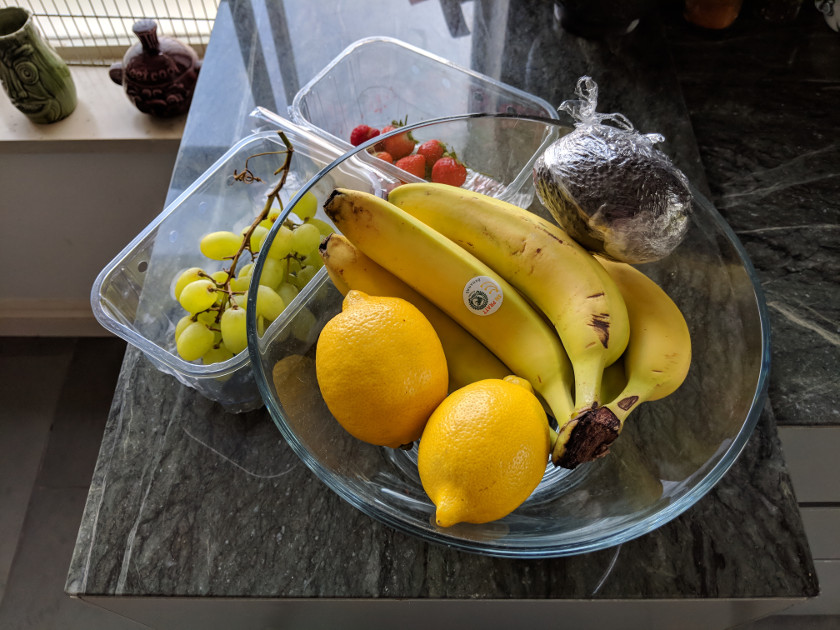
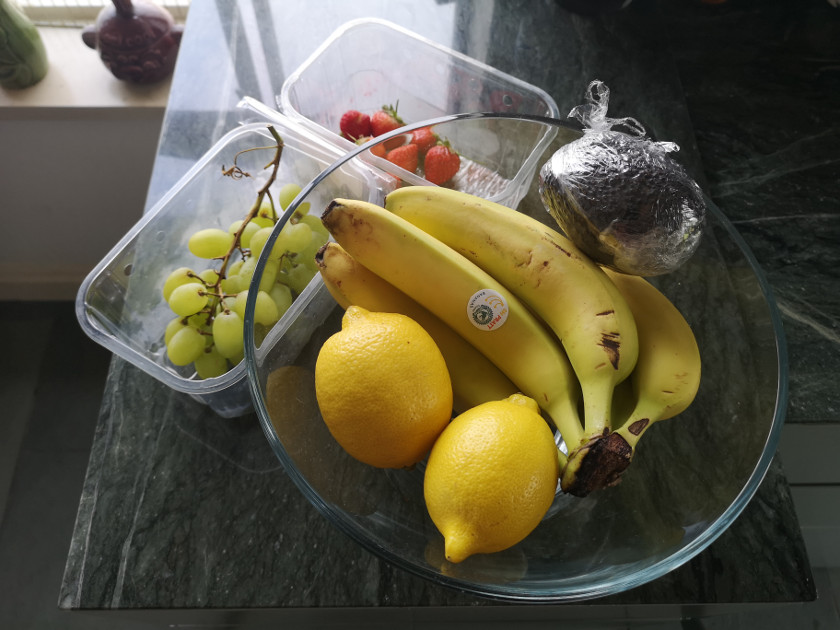 Huawei P20 Pro Food AI ON Huawei P20 Pro Food AI OFF
Huawei P20 Pro Food AI ON Huawei P20 Pro Food AI OFF 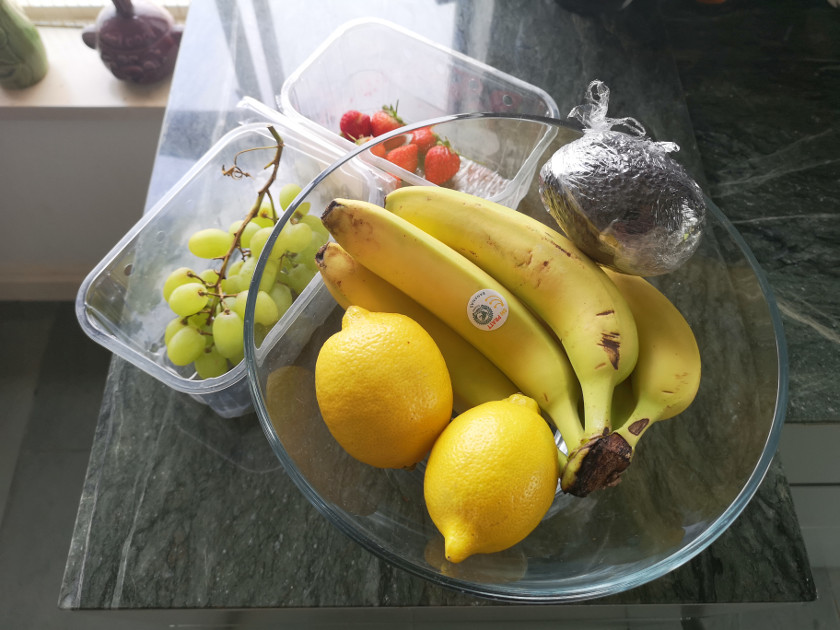
The Google Pixel 2's HDR+ provides the most notable change to the image. The multiple exposure stitching doesn't just greatly improve the exposure of the rear light source, it also evens out the exposure of the fruit.
The colors are nice and punchy, but I'm undecided whether the HDR+ image actually looks better here given the content. The shadowing on the subject matter is diminished, making the fruit look flat and a bit boring compared to the non-HDR+ picture. The grapes look particularly weird. The HDR exposure is undeniably finely balanced and the best of the bunch, but there's no enhancement here tailored to showing off a nice meal (or fruit in this case).
Flowers
Both the LG V30S and Huawei P20 Pro cameras can detect flowers, and the general tendency is again to boost color saturation to make the image really pop. The Huawei P20 Pro is the more dramatic here, boosting its contrast ratio to really highlight the petals. All of the results are rather good looking, given the relatively low light in this picture, but the P20 Pro's AI shows off the flowers the best.
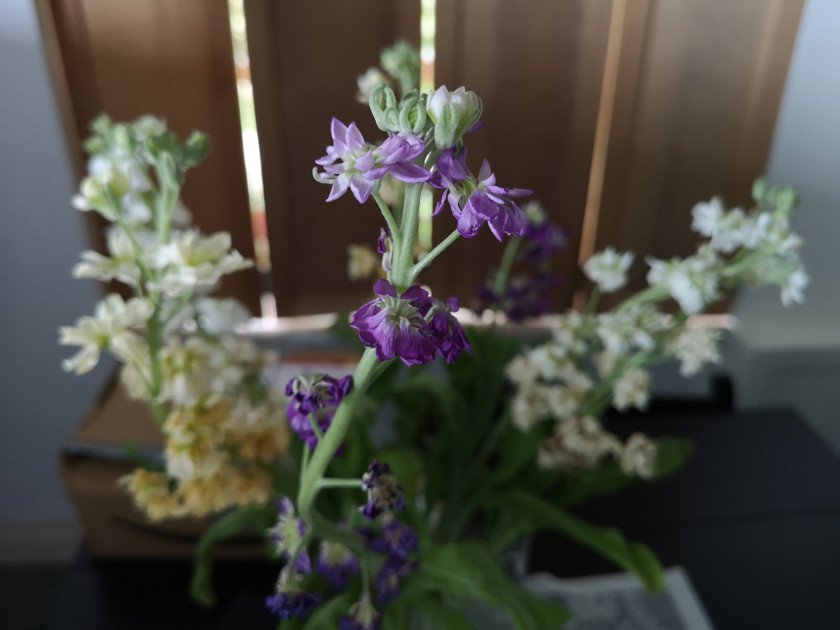 Huawei P20 Pro Flowers AI ON Huawei P20 Pro Flowers AI OFF
Huawei P20 Pro Flowers AI ON Huawei P20 Pro Flowers AI OFF 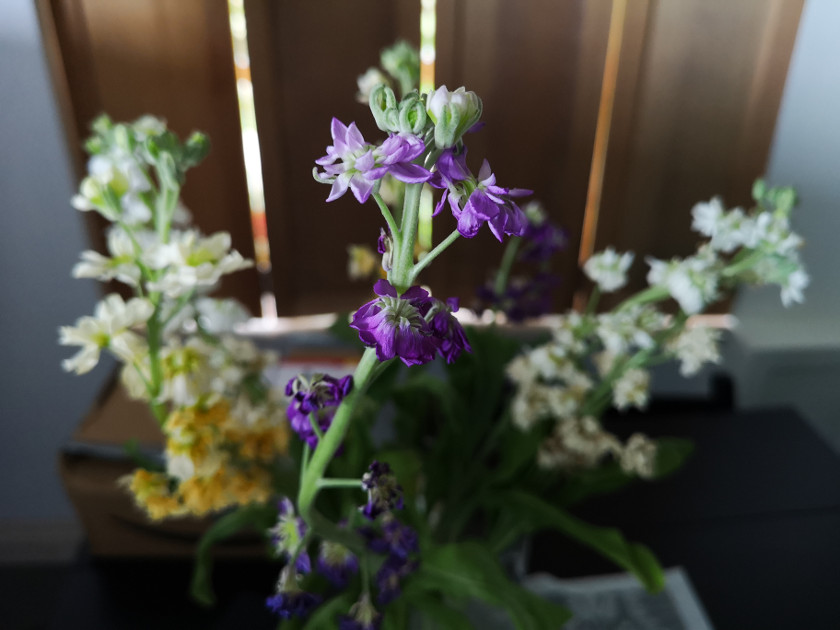
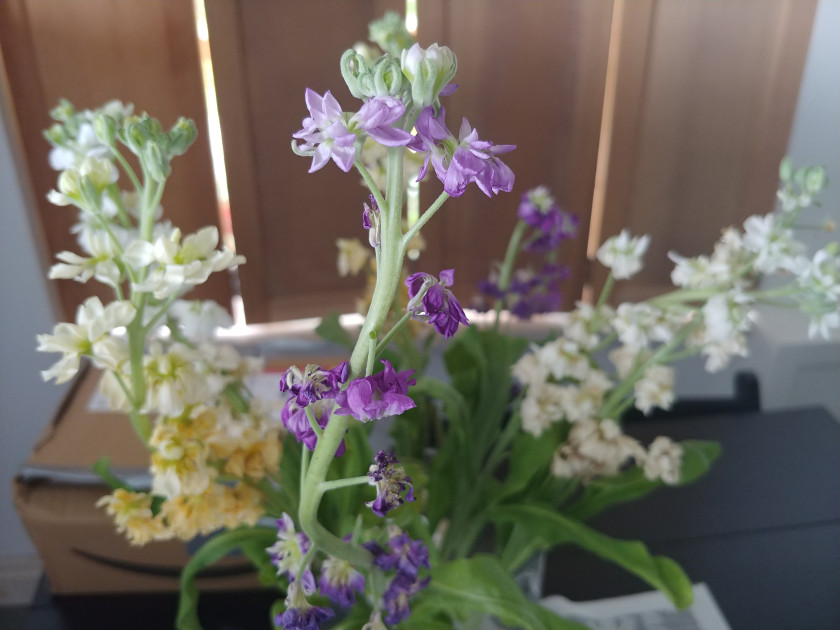 LG V30S Flowers AI ON LG V30S Flowers AI OFF
LG V30S Flowers AI ON LG V30S Flowers AI OFF 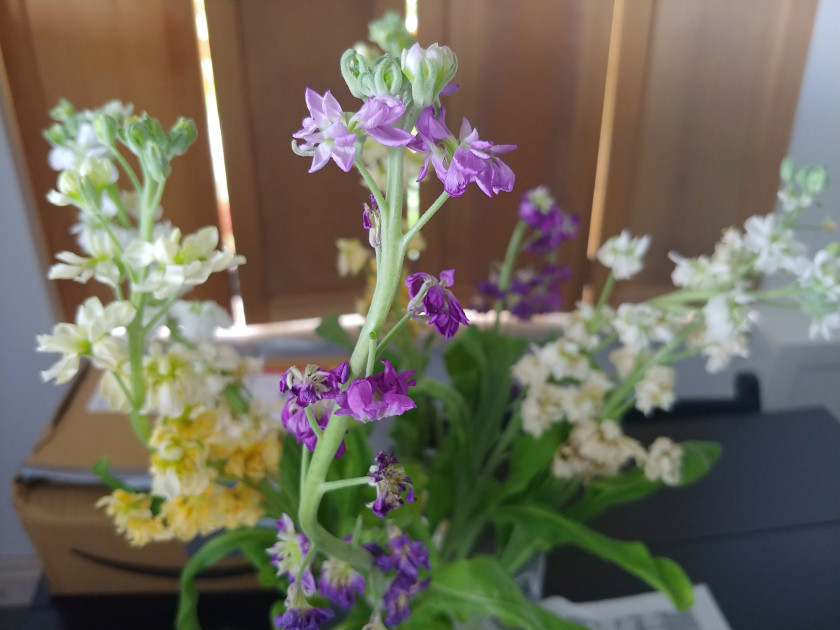
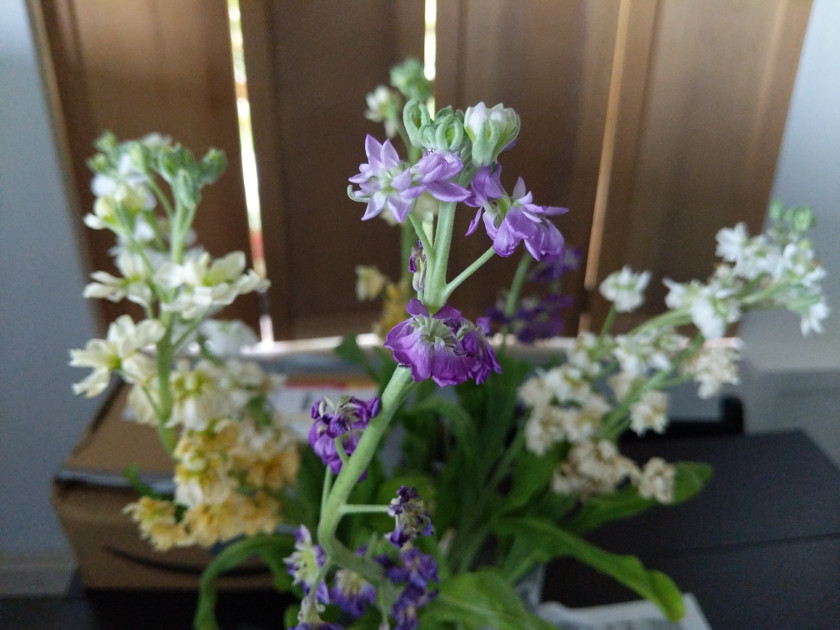 Google Pixel 2 Camera HDR ON Google Pixel 2 Camera HDR OFF
Google Pixel 2 Camera HDR ON Google Pixel 2 Camera HDR OFF 
The LG V30S detects the scene and applies similar color boost to the P20, but doesn't quite pack the same punch. This is partly due to the picture's temperature warming up a tad, which gives the black table an odd blue-ish hue.
The Google Pixel 2 is more interesting, as using HDR+ actually decreases the color saturation. Instead, the camera prioritizes boosting the deep blacks and refining the white highlights, while also reducing image noise due to the low light. It's very successful at that, but the flower petals look washed out by comparison and the mode almost replaces the purple petals with blue. The non-HDR+ setting provides a better look here.
Other "AI" capabilities
Truth be told, I quickly ran out of AI modes to test on these phones. Other than some variations on scene detection, LG's AI camera doesn't offer anything particularly smart. However, a number of the Huawei P20 Pro's features clearly use machine learning algorithms for more advanced purposes. In addition to the long exposure Night mode we've looked at before, I want to highlight the document scanning feature. Not necessarily for its usefulness, but for its sheer impressiveness.

The P20 Pro is able to identify the image above and in addition to offering a dedicated Text enhancement option, it is also suggests the "document scanning" mode. The camera not only pics out the page but also rotates the image and text seemingly through 3D space to line-up the image as if it had been scanned. That's some seriously impressive machine learning to keep the text legible.
It's not hugely useful unless you want to capture details of a poster or flyer at an angle to read later. I've used it countless times to nab presentation slides, but admittedly that's pretty niche. Still, no one else has a feature like this and it serves highlight how AI camera technology can do more than just change picture colors.
Low light, HDR, & tough exposure
The P20 Pro's UI doesn't tell you, but the camera is capable of a very Google-eqsue HDR effect.
None of the cameras offer a dedicated AI mode or prompt for low light. The P20 Pro became a bit confused sometimes suggesting Concert, Fireworks, and Sun Set modes when looking at a candle, but didn't suggest switching into its impressive Night mode. There is something going on under the hood, as the phone will display a "steady your device" prompt and outputs what resembles a Google-esque HDR+ image in low light. This option is only available in the "Photo" mode though and doesn't appear in Pro.
The LG V30S has no dedicated AI low light mode, but automatically kicks in its bright mode in some circumstances. This mode only activates when AI Cam is switched off, strangely enough. A few test shots I took, although brighter, looked grainy and lacked detail.
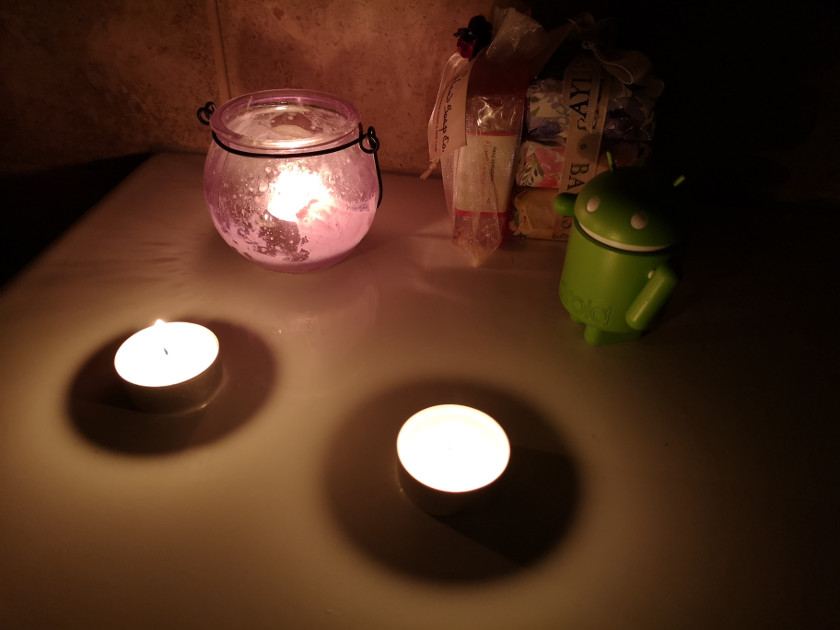 Huawei P20 Pro Candle Photo Mode (added HDR?) Huawei P20 Pro Candle Pro Mode
Huawei P20 Pro Candle Photo Mode (added HDR?) Huawei P20 Pro Candle Pro Mode 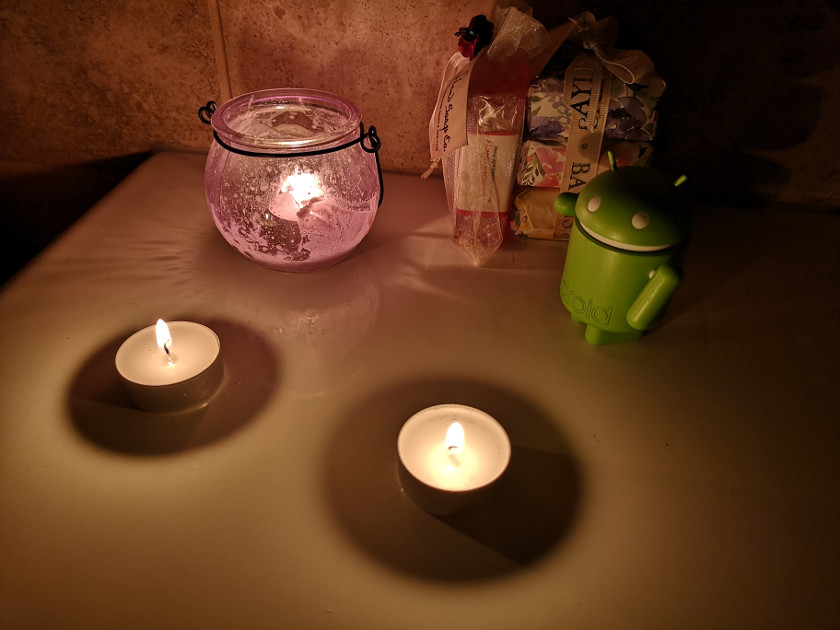
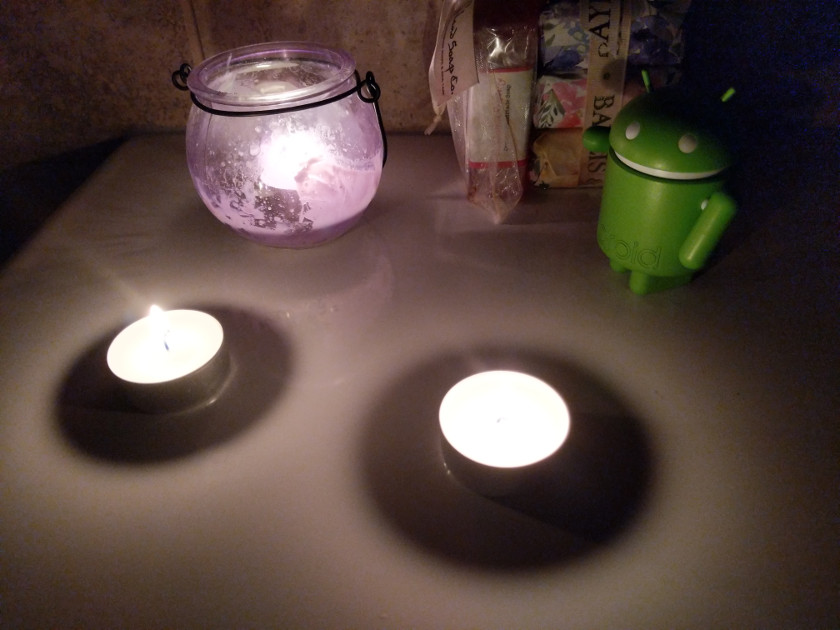 Google Pixel 2 Candle HDR ON Google Pixel 2 Candle HDR OFF
Google Pixel 2 Candle HDR ON Google Pixel 2 Candle HDR OFF 
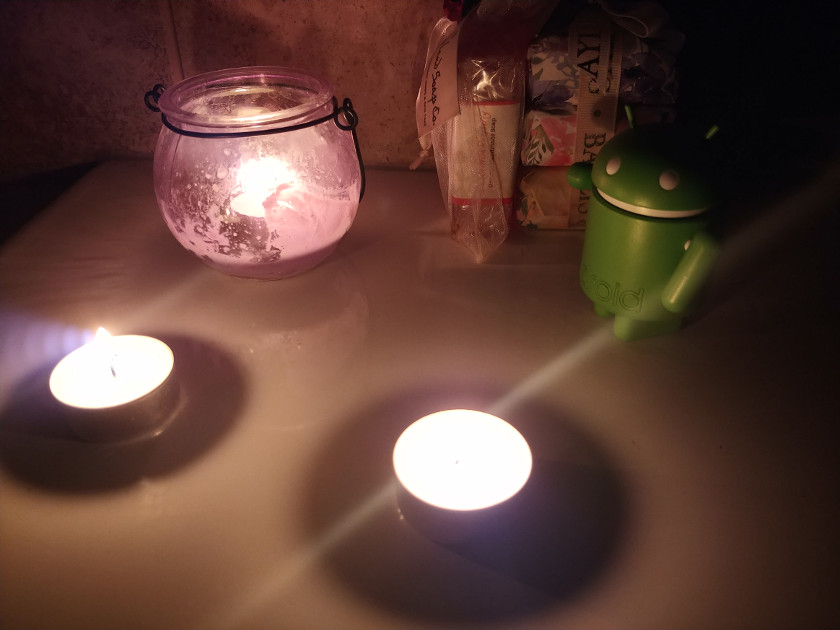 LG V30S Candle AI ON LG V30S Candle AI OFF
LG V30S Candle AI ON LG V30S Candle AI OFF 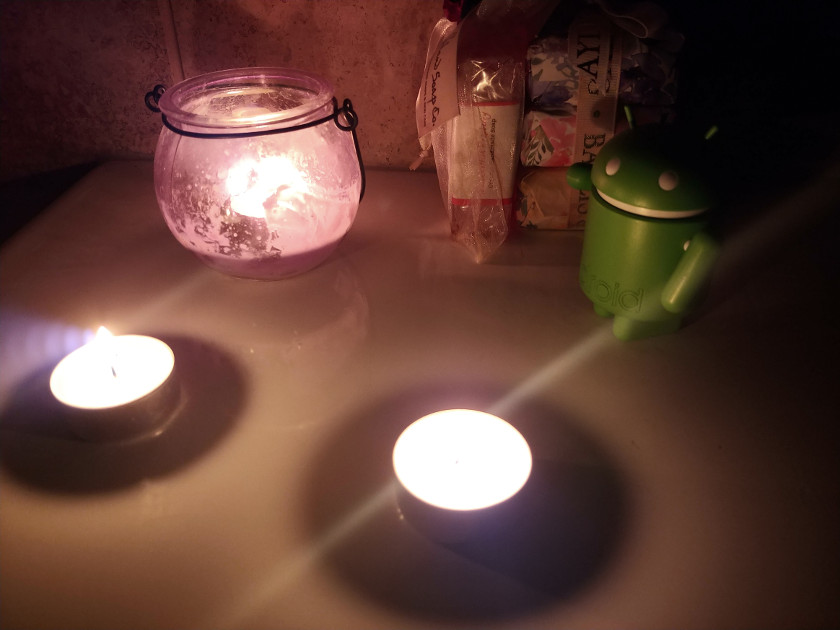
Of course, the Google Pixel 2's HDR+ mode is built for this type of environment and hands in a very good result. It balances the exposure of the bright candlelight against the dark background and offers substantial noise reduction over the default image too. However, the candlelight should be a yellow-orange rather than white, and so the camera's white balance preference is off completely here. This is the case with HDR on and off.
The Huawei P20 Pro does an even better job with its version of HDR processing, or whatever this is. Just as a reminder, we didn't shoot this with the HDR or Night mode options, just the regular Photo mode. Clearly there's a form of HDR or a multiple exposure algorithm taking place. The candles are even better exposed than on the Pixel, offering exceptional levels of detail while retaining dark blacks and very low noise. The color balance is a little on the warm side, but reasonably accurate to how the scene was lit in real life.
The LG V30S has the most accurate color balance, but the AI Cam doesn't make any difference in this scene and the Brightness Mode didn't kick in either.
HDR and multiple exposure algorithms are more useful than color tweaking 'AI'.
To showcase this similarity a step further, here's a better-lit shot that still triggered the effect. Huawei's implementation is even stronger than Google's, but they both successfully reduce background overexposure and brighten foreground subject matter. I don't much care for the often flattened look this approach offers, nor for Huawei's opaque implementation of the feature. However, HDR exposure correction is a more powerful tool than most of the "AI" suggestions we looked at earlier.
 Huawei P20 Pro Auto Enhancement Huawei P20 Pro No Enhancement
Huawei P20 Pro Auto Enhancement Huawei P20 Pro No Enhancement 
 Google Pixel 2 HDR ON Google Pixel 2 HDR OFF
Google Pixel 2 HDR ON Google Pixel 2 HDR OFF 
Do AI cameras help or hinder?
As you can see from the results, it's a mixed bag across all of the devices we tested. LG and Huawei's tweaks ranged from subtle to overbearing. Most of the time, it's preferable to leave the AI setting off. Many of the changes could be imitated at leisure afterwards if you really want them. Google's HDR+ implementation is very different and clearly helps to compensate for the rare occasions when the camera's exposure is a little off. It also offers improved dynamic range over other cameras, but this sometimes comes at the cost of drab colors. Overall, it's the most subtle and consistent of the technologies.
LG definitely offers the most basic AI camera technology of the three. It does little more than color profile and filter switching. Google's HDR+ is much more useful for general image enhancements. Huawei's P20 Pro appears to do a bit of both.
Getting an AI camera to even detect the desired scene can be tricky, as there is only a limited range of options to pick from. LG's software spits out plenty of words for what it's looking at, but often this won't result in a change of settings. Huawei's is similarly finicky, struggling to tell the difference between Flowers and Greenery settings, and constantly switching in and out of the Blue Sky option. Google's tech is better in this regard because it's always available should you need it, but often subtle enough not to be missed if it doesn't trigger.
Some pictures benefit from HDR and color enhancements, others don't. AI attempts to decide for you, but it's hit and miss.
This is not a slam dunk for Google. The technology is notably slower than its rivals, owing to its multiple picture stitching algorithm. This makes taking successive HDR+ shots of motion almost impossible. It's also not content aware in the same way as "AI" from LG and Huawei, so the effect doesn't always tailor well to specific scenarios.
From what I've seen, an AI camera definitely isn't a make or break feature. More often than not, you're better off making your own judgment call for the picture. Fortunately, all of these AI and HDR settings can be easily toggled on and off.
What do you think of these pictures? Is an AI camera worth it to you? Sound off in the comments!
from Android Authority https://ift.tt/2NBilky
via IFTTT

Aucun commentaire:
Enregistrer un commentaire